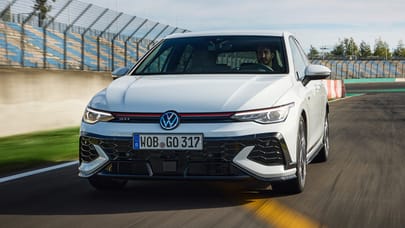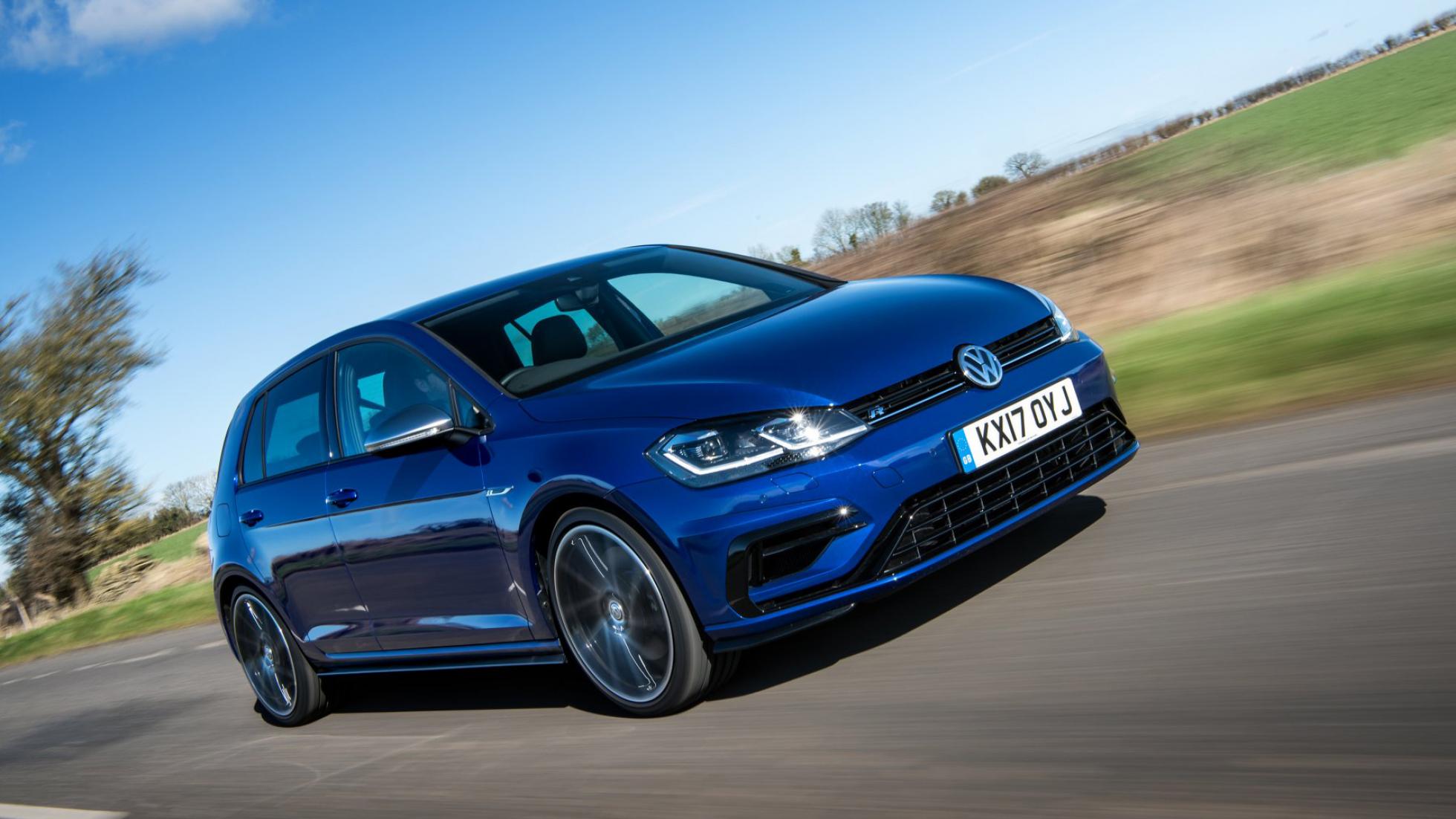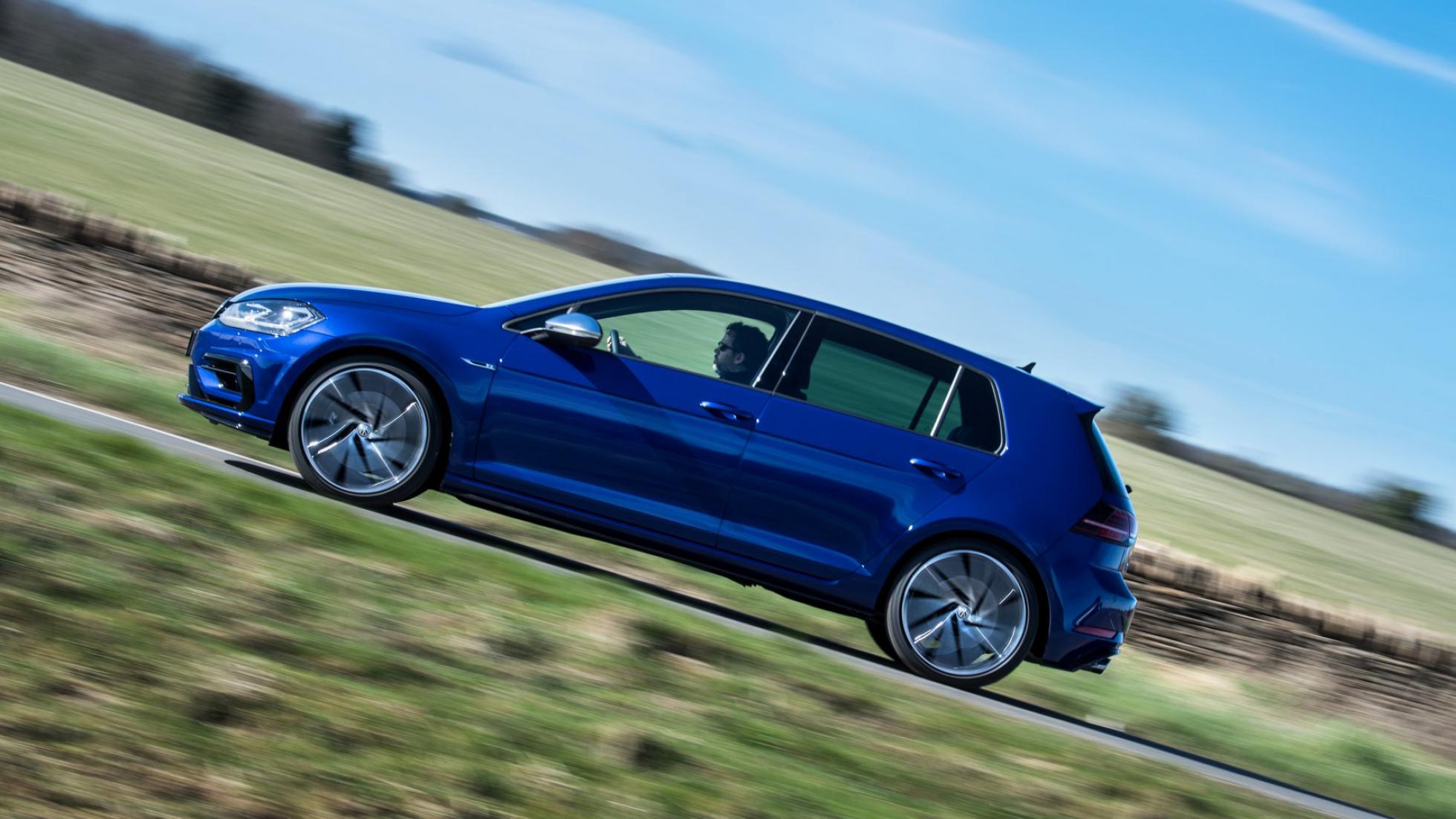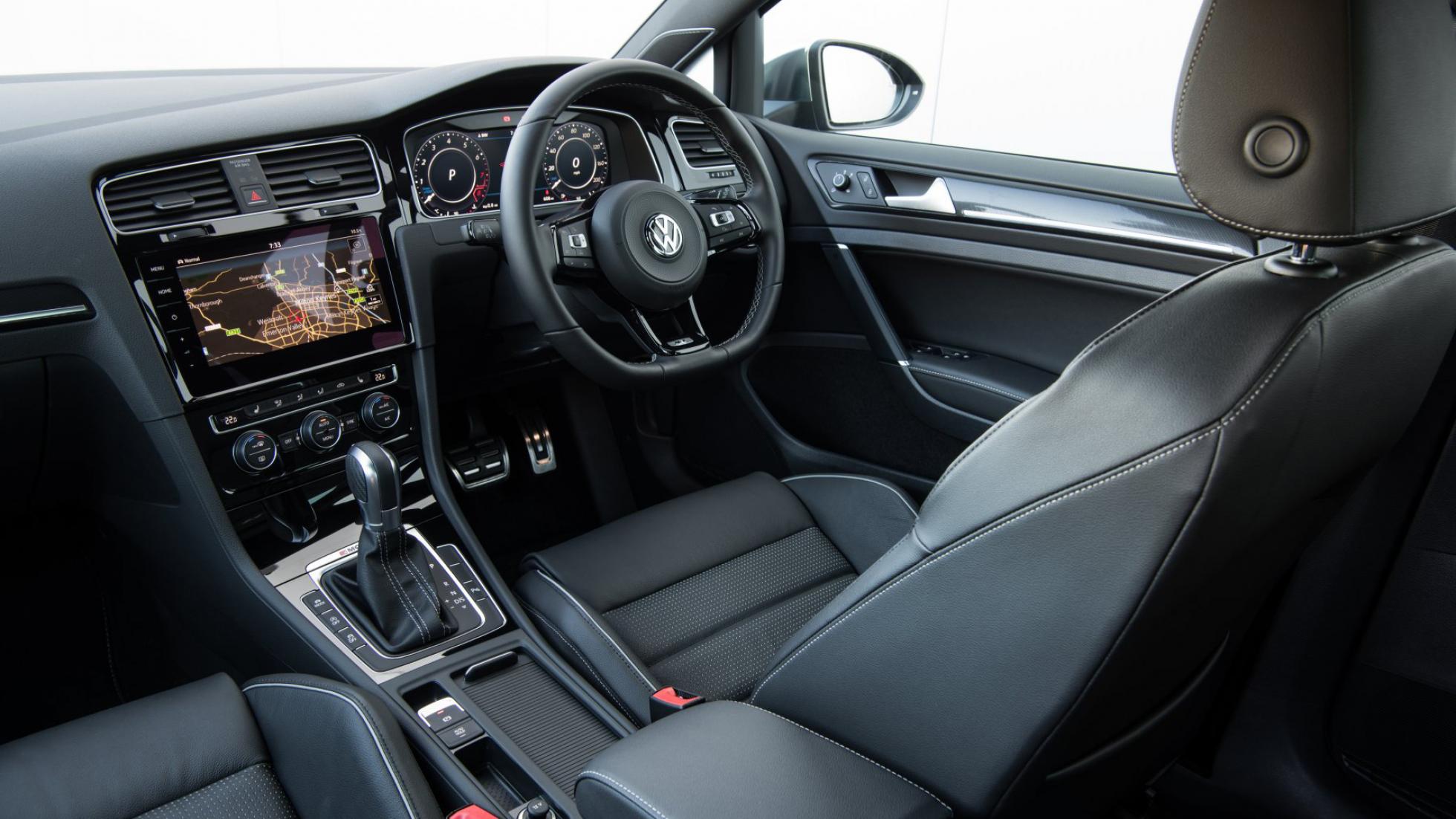
Driving
What is it like to drive?
The Golf R is a very easy car to drive quickly, and this might lead lazy people with dimly-lit imaginations to tell you its boring. But it isn’t. As our friend Shrek tells us, like an onion, it’s layered. If you just want to get from A to B very rapidly indeed, then it’s got traction, pace, grip, very little turbo lag and as a result your license may be at risk if you do not exercise restraint when accelerating. VW claimed 0-62mph in 5.2sec for the manual and 4.9sec for the DSG, but we timed a 296bhp DSG example from 0-60mph in 4.5 seconds. It’s got all the straight-line performance you could need, and a great soundtrack too, thanks not to speaker fakery (take note, BMW), but a Ford-style boombox ‘sound-symposer’ reverberating the engine’s natural bellow through the firewall and into the cabin. Happily, in Comfort or Eco mode the car shuts up and behaves, like a Golf ought to – and in a way a Civic Type R or RS Megane never manage to.
As standard, you got lower, firmer suspension than a normal Golf, but keep an eye out for Rs specced with DCC – Dynamic Chassis Control. This was a £1,500 option that plenty of the finance-package buyers won’t have had, but if you can source a DCC-equipped example, it adds even more bandwidth to the car’s superpowers. In Comfort mode, it’s freakishly languid and soft – more so than a normal Golf.
Normal mode is an ace compromise for everyday driving, and Sport mode tightens the suspension up without making it crashy. It doesn’t have the damping dexterity of the class benchmark – the newer Honda Civic Type R – but as an everyday hack that’ll also pummel a B-road, the Golf R is still very special. The Individual driving mode lets you set your preferences too – pity switching between modes via the touchscreen is a bit of a fiddle.
The four-wheel drive system is what’s known as a Haldex. We’ll spare you the technical PowerPoint and just say that most of the time, most of the power goes to the front wheels. When the computer senses the front wheels slipping, or that you’re hard on the throttle, more of the 300bhp is entrusted to the back wheels. What’s great is that the car doesn’t just feel like a locked-down, one-dimensional device, like so many other fast four-wheel drivers. There’s reward for driving a Golf R with technique: get it steady-state in the corner, lift just a tad to put the weight on the rear then plant the throttle and exit the corner with the back tyres just overspeeding, weight squatted down, chassis steering the car. It’s subtle, but can be addictive. It’s a playful Golf, but also very secure and stable. A car you can exploit, but also get 9/10ths from on the road without being antisocial.
Brakes are fine, but nothing special, and if you’re going to track your Golf R they’ll need upgrading to cope with repeated slowing of its portly 1,600kg kerbweight.
Variants We Have Tested

Trending this week
- Car Review
BMW 1 Series
- Top Gear's Top 9
Nine dreadful bits of 'homeware' made by carmakers







